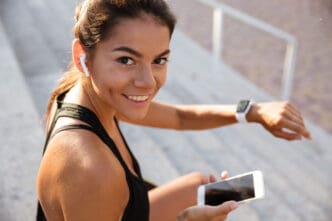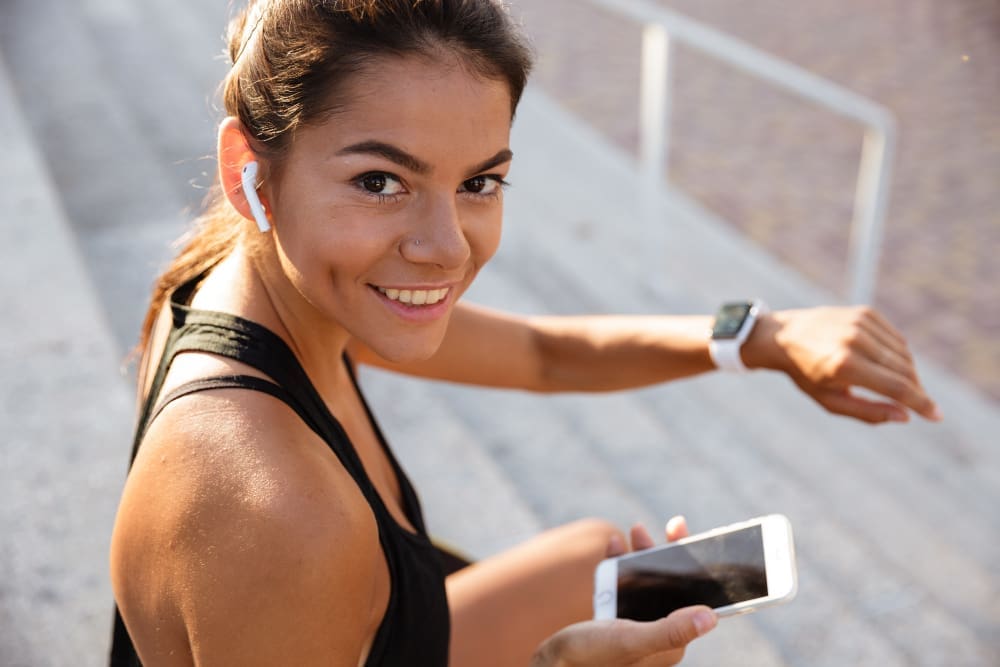For runners, the modern sports watch is no longer a simple stopwatch but a sophisticated wrist-based coach, data analyst, and navigator. In this crowded market, three brands dominate the conversation: Garmin, Coros, and Apple. The choice between them defines a runner’s relationship with their data and daily life. Garmin, the established industry titan, offers an unparalleled depth of performance analytics for the data-driven athlete. Coros, the aggressive challenger, wins on its staggering battery life and streamlined focus, making it a favorite among endurance and trail runners. The Apple Watch, a smartwatch first, has rapidly evolved into a formidable running tool, offering seamless lifestyle integration and robust features for the everyday athlete who wants one device to do it all. Deciding which is best depends entirely on a runner’s individual priorities, from the ultramarathoner needing multi-day battery to the city runner who values convenience and connectivity above all else.
Understanding the Core Philosophies
Each of these brands operates with a distinct philosophy, which is reflected in their hardware, software, and overall user experience. Understanding these core identities is the first step in finding the right watch for your wrist.
Garmin: The Data Powerhouse
Garmin built its legacy on GPS technology long before smartwatches were mainstream. This heritage is evident in its laser focus on providing the most comprehensive suite of training metrics available. The brand’s ecosystem is designed for athletes who want to dissect every aspect of their performance and recovery.
From the entry-level Forerunner series to the premium Fenix and Enduro lines, Garmin watches are packed with proprietary analytics. Features like Training Readiness, Body Battery, and HRV Status provide a holistic view of your body’s ability to handle stress and training. For runners specifically, tools like PacePro offer real-time grade-adjusted pace guidance, while ClimbPro breaks down ascents on a pre-loaded course, making it invaluable for trail and mountain runners.
The target user for Garmin is the runner who loves data. Whether you’re a beginner trying to understand your fitness or an elite athlete fine-tuning your race strategy, Garmin provides a tool to measure, analyze, and improve upon nearly every imaginable metric.
Coros: The Endurance Challenger
Coros entered the market as a direct competitor to Garmin, but it carved out its niche by focusing on a few key areas and executing them exceptionally well. Its most celebrated feature is, without a doubt, its industry-leading battery life. This alone has made it the go-to choice for ultrarunners and multi-day adventurers.
Where Garmin can sometimes feel overwhelmingly complex, Coros champions simplicity. The user interface is clean, the companion app is fast and intuitive, and the hardware often features a simple digital dial for easy navigation during a run. This design philosophy prioritizes function over frills.
The Coros EvoLab platform offers powerful analytics like training load management and marathon level predictors, but it presents them in a more digestible format than some of Garmin’s deeper menus. Coros is for the runner who wants elite-level performance and battery without getting lost in a sea of features they may never use.
Apple Watch: The Smartwatch That Runs
The Apple Watch is, first and foremost, the world’s leading smartwatch. Its primary strength lies in its seamless integration into the Apple ecosystem, offering unparalleled connectivity, communication, and third-party app support. For years, its running features were considered basic, but recent updates to watchOS have changed the game dramatically.
Apple now offers advanced running metrics natively, including Running Power, Vertical Oscillation, Ground Contact Time, and Stride Length. Features like Track Mode provide precise pacing and distance on a standard 400m track, while the ability to create custom workouts brings it much closer to its dedicated sports watch rivals.
The ideal Apple Watch user is the person who wants a single, elegant device for their entire day. They need a watch that transitions seamlessly from the office to a 10k run, that can take calls, answer texts, pay for coffee, and track their splits with reliable accuracy. It is the ultimate device for lifestyle convenience.
Feature Face-Off: The Metrics That Matter
When you get down to the specifics, the differences between these watches become even clearer. Here’s how they stack up in the categories that matter most to runners.
GPS Accuracy and Battery Life
This is arguably the most critical category for a running watch. On the premium end, all three brands now offer dual-frequency (or multi-band) GPS, which communicates with multiple satellite systems on multiple frequencies for superior accuracy in challenging environments like dense cities or deep canyons. In practice, the accuracy of high-end models from Garmin, Coros, and Apple is exceptional and largely comparable for most runs.
Battery life, however, is a different story. Coros is the undisputed king. A Coros Vertix 2 can last up to 60 days in smartwatch mode or 140 hours in standard GPS mode. A high-end Garmin Fenix 7 Pro offers around 22 days of smartwatch use and up to 89 hours of GPS tracking. The Apple Watch Ultra 2, Apple’s most durable model, provides a respectable 36 hours of normal use or up to 12 hours of workout time with GPS, but it pales in comparison to the dedicated sports watches. For marathoners, any of these will suffice, but for a 100-mile ultramarathon, Coros and Garmin are the only reliable options.
Running Dynamics and Training Analytics
Garmin offers the deepest well of data. Its Training Readiness score synthesizes sleep, recovery time, HRV status, and recent training load into a single, actionable number telling you how prepared you are for a hard workout. This predictive and holistic approach is its greatest strength.
Coros provides similar insights through its EvoLab platform, focusing on metrics like overall fatigue and training load impact. It’s a slightly simpler, more streamlined system that many users find more direct and easier to interpret than Garmin’s multi-layered approach.
The Apple Watch now captures the raw data for advanced running dynamics, but it doesn’t offer the same level of native analysis or prescriptive feedback. It tells you your Ground Contact Time, but it doesn’t weave it into a larger narrative about your readiness or training load in the same way Garmin and Coros do. Users often rely on third-party apps like Strava, TrainingPeaks, or Athlytic to get that deeper analytical insight.
Mapping and Navigation
For trail runners and explorers, navigation is non-negotiable. Here, Garmin is the clear leader. Higher-end models come with pre-loaded, full-color topographic maps. You can create a route on your phone and send it to your watch for turn-by-turn directions on the trail. It’s a robust, reliable system that works completely offline.
Coros also offers mapping on its higher-end models, and while highly functional, the experience is not quite as polished as Garmin’s. It relies more on breadcrumb-style navigation, though recent updates have added full topo maps. The map rendering and panning can be slightly less fluid than on a Garmin.
The Apple Watch relies on Apple Maps or third-party apps like WorkOutDoors. This works well in urban areas with a cellular connection, but it’s less ideal for remote wilderness navigation. While you can download offline maps, the experience is not as seamlessly integrated for on-the-fly trail routing as it is with Garmin.
Smartwatch Features and Daily Use
This category is an easy win for the Apple Watch. Its tight integration with the iPhone makes for a flawless experience with notifications, calls, and texts. The App Store provides endless functionality, and Apple Pay is the most widely accepted and easiest-to-use form of contactless payment. For music, it seamlessly syncs with Apple Music or Spotify for offline playback.
Garmin has made significant strides here, offering Garmin Pay, music storage, and reliable notifications. However, the interface is less fluid, and its Connect IQ app store is far less extensive than Apple’s. Coros is intentionally minimalist, providing basic notifications but little else. It has no contactless payments, no music storage, and no app store, reinforcing its identity as a pure sports tool.
Who Should Buy Which Watch? A Practical Guide
Your choice comes down to self-awareness. What kind of runner are you, and what do you truly need from your device?
Choose Garmin if…
You are a data-obsessed athlete who believes that what gets measured gets managed. You want deep insights into your training, recovery, and overall health, and you enjoy digging into charts and graphs. You run on roads and trails and demand best-in-class navigation to explore new routes with confidence. You appreciate having a wide range of models and price points to choose from.
Choose Coros if…
Battery life is your number one, non-negotiable priority. You are an ultrarunner, a multi-day hiker, or simply someone who hates charging their devices. You value a clean, simple, and fast user experience and prefer a watch that focuses exclusively on being an elite sports tool without the distraction of extensive smartwatch features.
Choose Apple Watch if…
You seek the ultimate in convenience and lifestyle integration. You want one device that can manage your work life, social connections, and fitness goals. Your running is a key part of a balanced lifestyle, but not the only part. You are embedded in the Apple ecosystem and value the premium design, fluid user interface, and vast app support that comes with it.
Ultimately, the debate over Garmin, Coros, and Apple Watch isn’t about finding the single best watch, but about finding the watch that best reflects your personal running journey and lifestyle. Garmin offers the deepest data, Coros provides unrivaled endurance, and Apple delivers unmatched versatility. Each is a powerful tool, and choosing the one that aligns with your needs is the most important step you can take in using technology to become a better, healthier runner.







